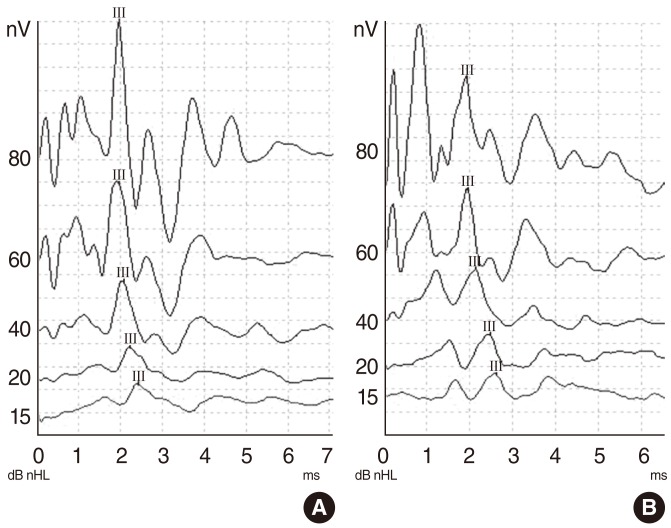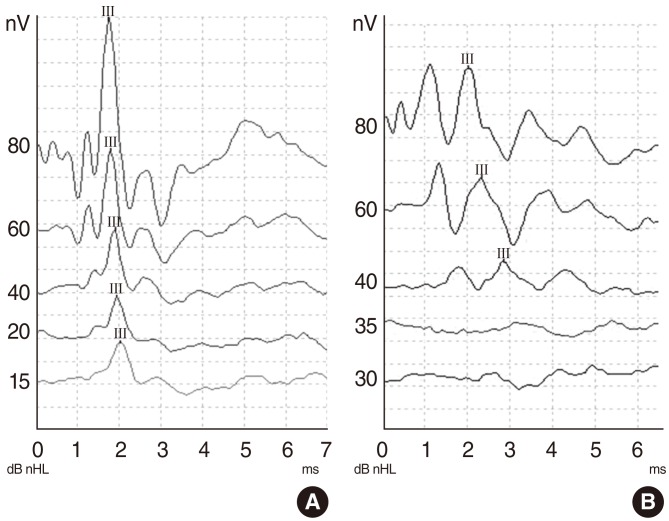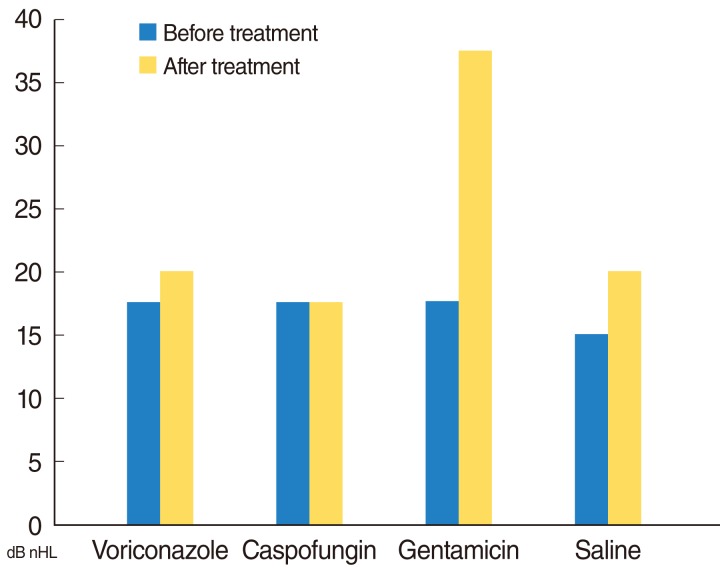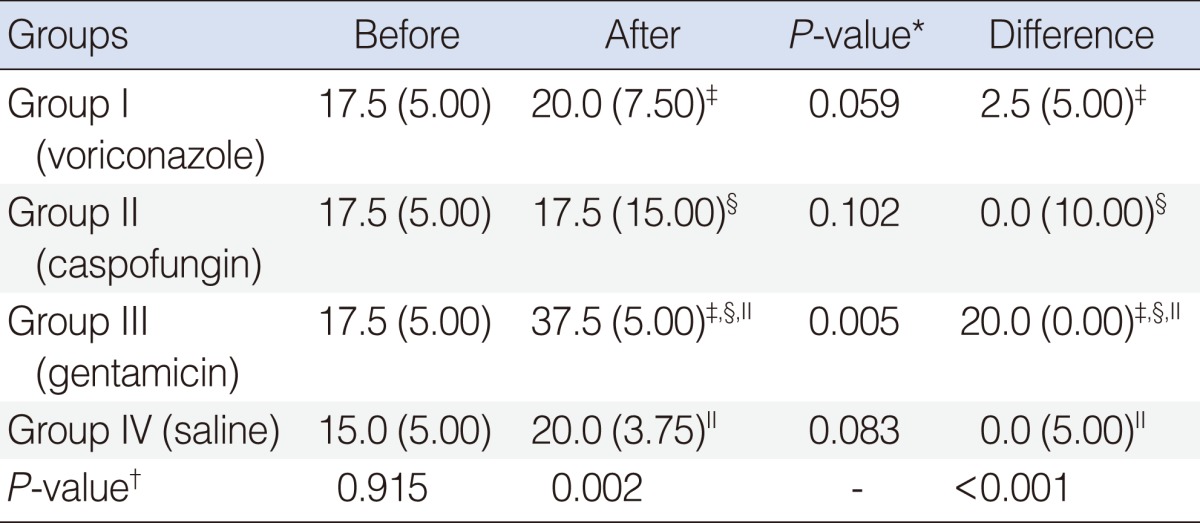1. Eschenauer G, Depestel DD, Carver PL. Comparison of echinocandin antifungals. Ther Clin Risk Manag. 2007; 3. 3(1):71–97. PMID:
18360617.

2. Nakaya K, Oshima T, Kudo T, Aoyagi I, Katori Y, Ota J, et al. New treatment for invasive fungal sinusitis: three cases of chronic invasive fungal sinusitis treated with surgery and voriconazole. Auris Nasus Larynx. 2010; 4. 37(2):244–249. PMID:
19553042.

3. Tsiodras S, Zafiropoulou R, Giotakis J, Imbrios G, Antoniades A, Manesis EK. Deep sinus aspergillosis in a liver transplant recipient successfully treated with a combination of caspofungin and voriconazole. Transpl Infect Dis. 2004; 3. 6(1):37–40. PMID:
15225226.

4. Pfaller MA, Boyken L, Hollis RJ, Kroeger J, Messer SA, Tendolkar S, et al. In vitro susceptibility of clinical isolates of Aspergillus spp. to anidulafungin, caspofungin, and micafungin: a head-to-head comparison using the CLSI M38-A2 broth microdilution method. J Clin Microbiol. 2009; 10. 47(10):3323–3325. PMID:
19710267.
5. Vennewald I, Klemm E. Otomycosis: diagnosis and treatment. Clin Dermatol. 2010; 3. 28(2):202–211. PMID:
20347664.

6. Aycicek A, Cetinkaya Z, Kiyici H, Kenar F, Asik G, Kiraz N. The effects of caspofungin and voriconazole in an experimental fungal infection of the ear due to Aspergillus. Eur Arch Otorhinolaryngol. 2009; 11. 266(11):1703–1709. PMID:
19340446.

7. Parize P, Chandesris MO, Lanternier F, Poiree S, Viard JP, Bienvenu B, et al. Antifungal therapy of Aspergillus invasive otitis externa: efficacy of voriconazole and review. Antimicrob Agents Chemother. 2009; 3. 53(3):1048–1053. PMID:
19104029.
8. Said T, Nampoory MR, Nair MP, Al-Saleh M, Al-Haj KH, Halim MA, et al. Safety of caspofungin for treating invasive nasal sinus aspergillosis in a kidney transplant recipient. Transplant Proc. 2005; 9. 37(7):3038–3040. PMID:
16213297.

9. van de Sande WW, van Vianen W, ten Kate MT, Vissers J, Laurijsens J, Tavakol M, et al. Caspofungin prolongs survival of transiently neutropenic rats with advanced-stage invasive pulmonary aspergillosis. Antimicrob Agents Chemother. 2008; 4. 52(4):1345–1350. PMID:
18195059.

10. Tom LW. Ototoxicity of common topical antimycotic preparations. Laryngoscope. 2000; 4. 110(4):509–516. PMID:
10763995.

11. Shine NP, Coates H. Systemic ototoxicity: a review. East Afr Med J. 2005; 10. 82(10):536–539. PMID:
16450683.

12. Gurkov R, Eshetu T, Miranda IB, Berens-Riha N, Mamo Y, Girma T, et al. Ototoxicity of artemether/lumefantrine in the treatment of falciparum malaria: a randomized trial. Malar J. 2008; 9. 7:179. PMID:
18796142.

13. Shi Y, Martin WH. ABR and DPOAE detection of cochlear damage by gentamicin. J Basic Clin Physiol Pharmacol. 1997; 8(3):141–155. PMID:
9429983.

14. Baylancicek S, Serin GM, Ciprut A, Sari M, Akdas F, Tutkun A. Ototoxic effect of topical ciclopirox as an antimycotic preparation. Otol Neurotol. 2008; 10. 29(7):910–913. PMID:
18698269.

15. Ozturkcan S, Dundar R, Katilmis H, Ilknur AE, Aktas S, Haciomeroglu S. The ototoxic effect of boric acid solutions applied into the middle ear of guinea pigs. Eur Arch Otorhinolaryngol. 2009; 5. 266(5):663–667. PMID:
18795310.

16. van Tol A, van Rijswijk J. Aspergillus mastoiditis, presenting with unexplained progressive otalgia, in an immunocompetent (older) patient. Eur Arch Otorhinolaryngol. 2009; 10. 266(10):1655–1657. PMID:
19052763.

17. Dunn JJ, Wolfe MJ, Trachtenberg J, Kriesel JD, Orlandi RR, Carroll KC. Invasive fungal sinusitis caused by Scytalidium dimidiatum in a lung transplant recipient. J Clin Microbiol. 2003; 12. 41(12):5817–5819. PMID:
14662991.
18. Amonoo-Kuofi K, Tostevin P, Knight JR. Aspergillus mastoiditis in a patient with systemic lupus erythematosus: a case report. Skull Base. 2005; 5. 15(2):109–112. PMID:
16148971.

19. Chirch L, Roche P, Fuhrer J. Successful treatment of invasive Aspergillus sinusitis with caspofungin and voriconazole. Ear Nose Throat J. 2008; 1. 87(1):30–33. PMID:
18357943.

20. Erbek SS, Serefhanoglu K, Erbek S, Demirbilek M, Can F, Tarhan E, et al. Clinical subgroups and antifungal susceptibilities in fungal culture-positive patients with chronic rhinosinusitis. Eur Arch Otorhinolaryngol. 2008; 7. 265(7):775–780. PMID:
18043932.










 PDF
PDF Citation
Citation Print
Print


 XML Download
XML Download